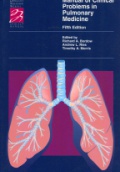Description
An ideal companion to Knottenbelt's Equine Stud Farm Medicine and
Surgery, this comprehensive text covers all aspects of veterinary care
of the foal – from birth through weaning. Describing appropriate
procedures for clinical assessment of the new-born foal, it addresses
emergency interventions, resuscitation, and critical care. Disorders of
growth and nutrition are reviewed, as well as congenital or inherited
abnormalities of each of the major body systems. Plus, a unique section
on special syndromes provides more than 200 color photographs carefully
selected from the authors' extensive collection.
Audience
Specialist equine vets; qualified practitioners in general large animal practice; veterinary students.
Secondary readership among
professional horse owners; breeders, trainers, stables, and stud farms
Contents
Acknowledgements
Dedication
Introduction
1. Perinatal review
Peripartum adaptation of the foal
Review of neonatal physiology
Normal reference values
Understanding immunity in the foal
Nutrition of the foal
2. Risk category of the foal
Assessment of fetal
health and preparation for birth
The placenta
Assessment of risk category of the foal
3. The foal at delivery
Events following
delivery in the normal foal
Parturition injuries in foals
Evaluation of the newborn foal immediately post partum
Resuscitation at foaling
and caesarean-section
4. Routine management and clinical examination
Routine management of the newborn and neonatal foal
Routine
veterinary examinations and procedures of the newborn and neonatal foal
Clinical examination of the newborn and neonatal foal
Recognizing
the potentially abnormal foal
5. Congenital abnormalities and inherited disorders (including conditions that manifest at an older
age)
Alimentary system
Respiratory system
Cardiovascular system
Urinary tract
Reproductive system
Musculoskeletal
Nervous system
The eye
Endocrine
Cutaneous
6. Neonatal syndromes
Prematurity and dysmaturity
Seizures, weakness and abnormal behaviour
Lethargy
Immunocompromise
Pyrexia
Icterus
Anaemia
Diarrhoea
Colic and tenesmus
Dysphagia
Respiratory distress and coughing
Limb deformities
Lameness and other gait abnormalities
Umbilical diseases
Nasal discharge
The painful and cloudy eye
Dermatological conditions
Weight
loss and poor growth
Sudden and unexpected death
7. Procedures and diagnostic aids
1. Identification methods
2. Injection sites
3. Blood sampling
4. Blood/ cerebrospinal fluid/ synovial fluid culture
5. Intravenous catheter selection, placement and complications
6. Regional limb perfusion
7. Intraosseous/ intramedullary (fluid/ antibiotic) therapy
8. Blood pressure measurement
9. Rapid blood
glucose estimation
10. (oral) lactose tolerance test
11. Urine collection and bladder catheterisation
12. Ultrasonography
13. Fetal electrocardiology
14. Foal electrocardiology
15. Radiography
16. Endoscopy
17. Tracheal aspiration/ wash
18. Nasogastric and enteral intubation
19. Intranasal
oxygen intubation
20. Abdominocentesis
21. Liver biopsy
22. Joint aspiration
23. Cerebrospinal fluid sampling
24. Phytohaemoagglutinin
skin test for T lymphocyte function
25 ?Jaundiced? foal agglutination test
26. Method for washing red cells
27. Test for foal blood compatibility
28. Assessment of colostral quality
29. Tests for serum IgG status
30. Blood and plasma transfusion
31. Bone marrow biopsy/ aspirate
32. Euthanasia
33. Post mortem examination
8. Intensive care, therapeutics and nursing
Initial evaluation of the sick neonate
Equipment required for a foal intensive care unit
Critical
A. Specific critical care therapy
B. Nursing therapy
C. Standard post foaling
treatments
D. Record keeping
E. Daily plan and monitoring of the critical care patient
F. Daily nursing care
Guidelines for drug use
in the neonate
Ventilation
Nutrition of the sick foal
Fluid therapy in the foal
Sedation and anaesthesia
9. Miscellaneous
Referral
of foals to a specialist centre
Transportation of the sick or injured foal
Management of the orphan foal
A. Hand-rearing the orphan foal
B. Fostering the orphan foal
Appendices
Placental examination forms
Reference values for haematology and biochemistry
Neonatal
foal history chart
Neonatal foal clinical examination charts
Intensive care forms
Vital signs chart
Feeding and fluid therapy protocol
Treatment sheet
Haematology results
Biochemistry results
Blood gas results
Intravenous catheter table
Drug names and dosages for foals
Sepsis scoring for neonatal foals
Post mortem examination form
